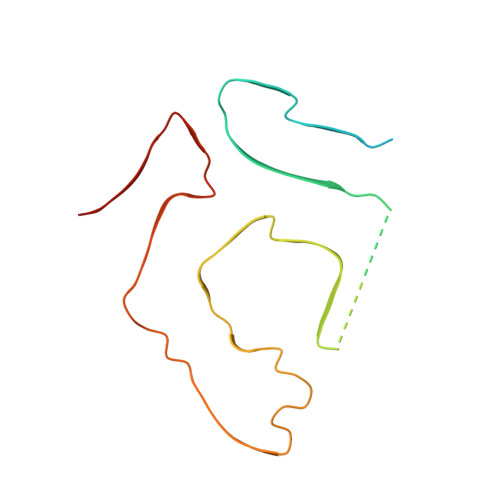Structural polymorphism of amyloid fibrils in ATTR amyloidosis revealed by cryo-electron microscopy.
Nguyen, B.A., Singh, V., Afrin, S., Yakubovska, A., Wang, L., Ahmed, Y., Pedretti, R., Fernandez-Ramirez, M.D.C., Singh, P., Pekala, M., Cabrera Hernandez, L.O., Kumar, S., Lemoff, A., Gonzalez-Prieto, R., Sawaya, M.R., Eisenberg, D.S., Benson, M.D., Saelices, L.(2024) Nat Commun 15: 581-581
- PubMed: 38233397
- DOI: https://doi.org/10.1038/s41467-024-44820-3
- Primary Citation of Related Structures:
8E7E, 8E7J, 8TDN, 8TDO - PubMed Abstract:
ATTR amyloidosis is caused by the deposition of transthyretin in the form of amyloid fibrils in virtually every organ of the body, including the heart. This systemic deposition leads to a phenotypic variability that has not been molecularly explained yet. In brain amyloid conditions, previous studies suggest an association between clinical phenotype and the molecular structures of their amyloid fibrils. Here we investigate whether there is such an association in ATTRv amyloidosis patients carrying the mutation I84S. Using cryo-electron microscopy, we determined the structures of cardiac fibrils extracted from three ATTR amyloidosis patients carrying the ATTRv-I84S mutation, associated with a consistent clinical phenotype. We found that in each ATTRv-I84S patient, the cardiac fibrils exhibited different local conformations, and these variations can co-exist within the same fibril. Our finding suggests that one amyloid disease may associate with multiple fibril structures in systemic amyloidoses, calling for further studies.
Organizational Affiliation:
Center for Alzheimer's and Neurodegenerative Diseases, University of Texas Southwestern Medical Center (UTSW), Dallas, TX, USA.














